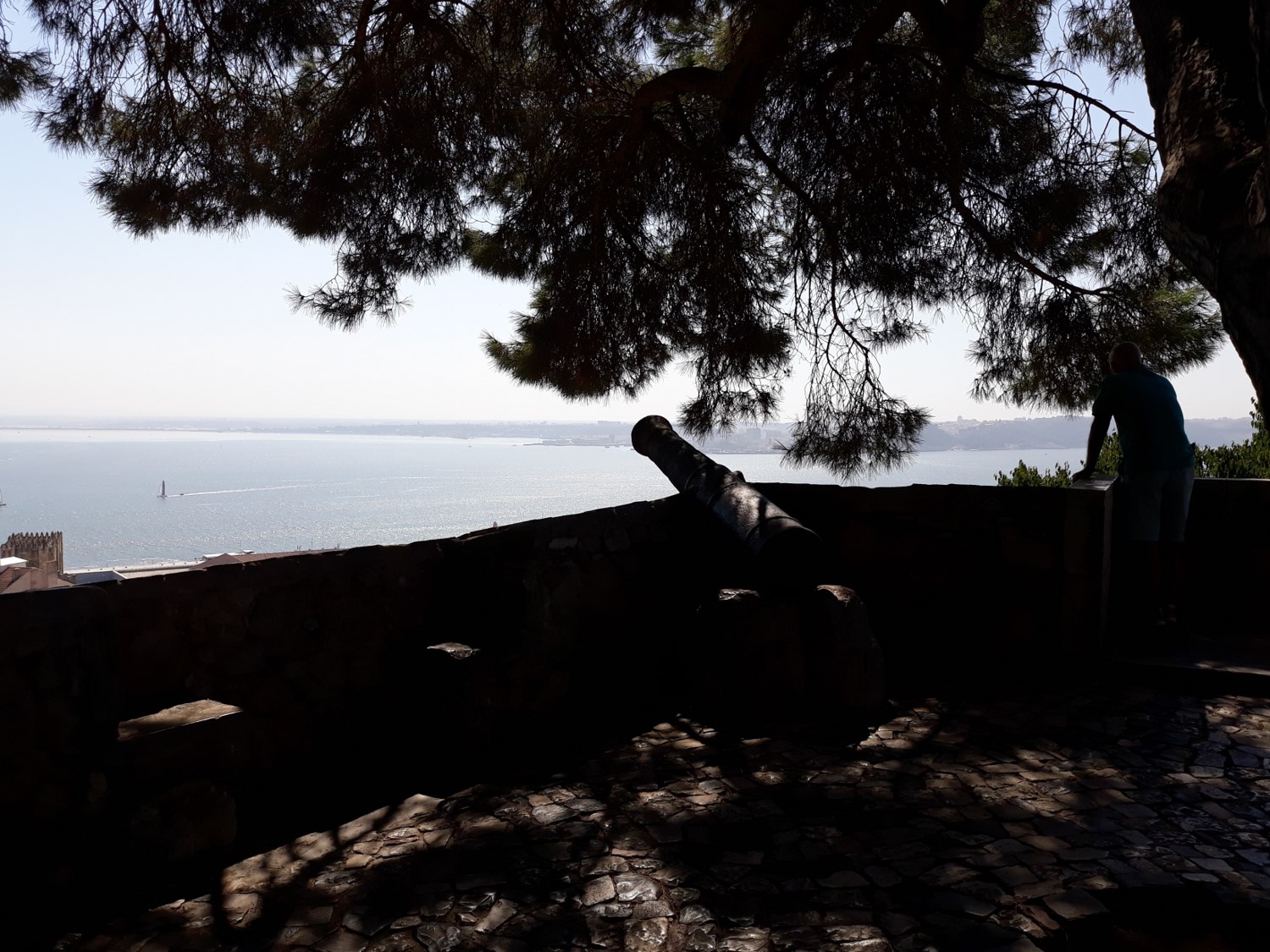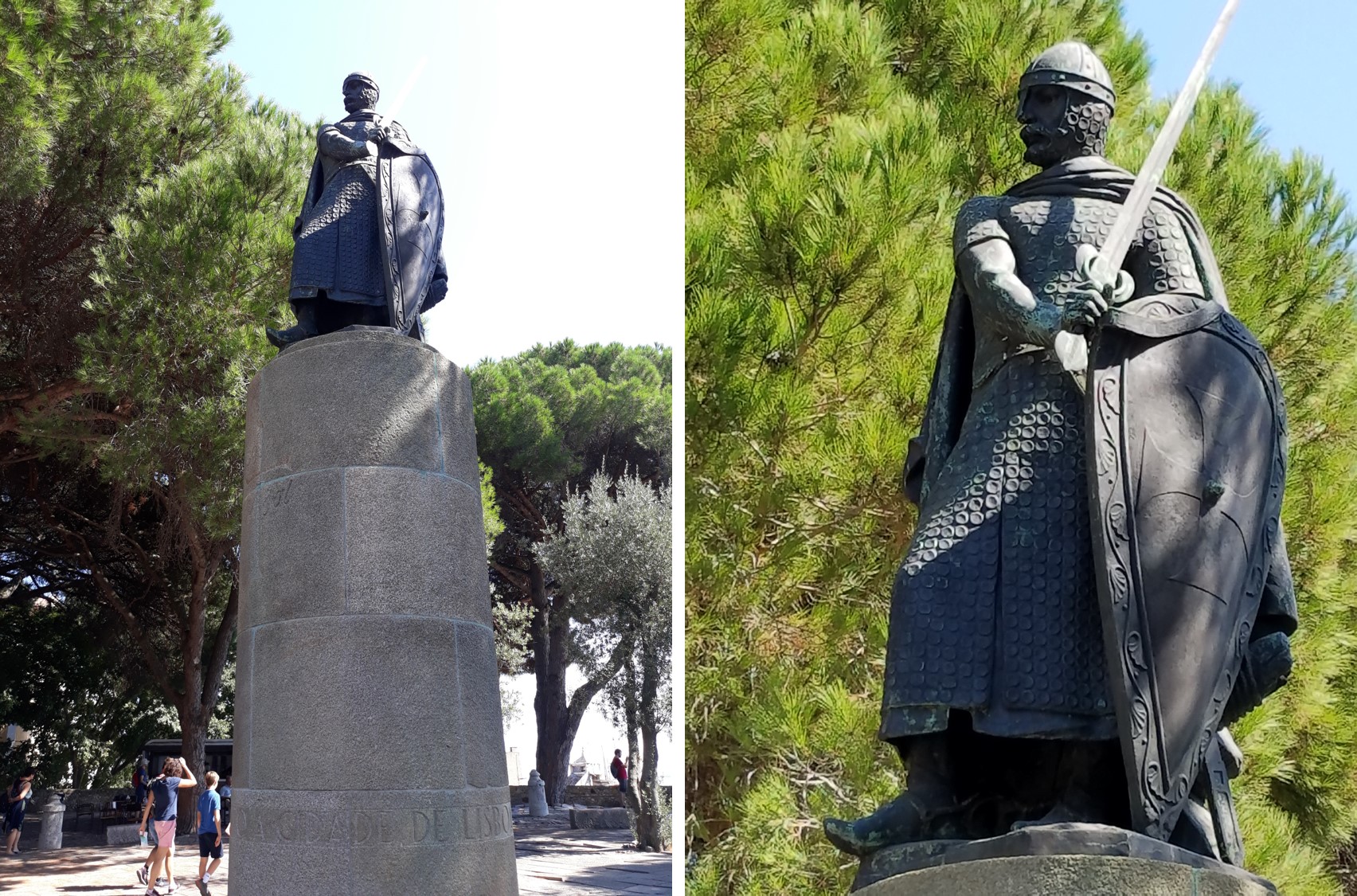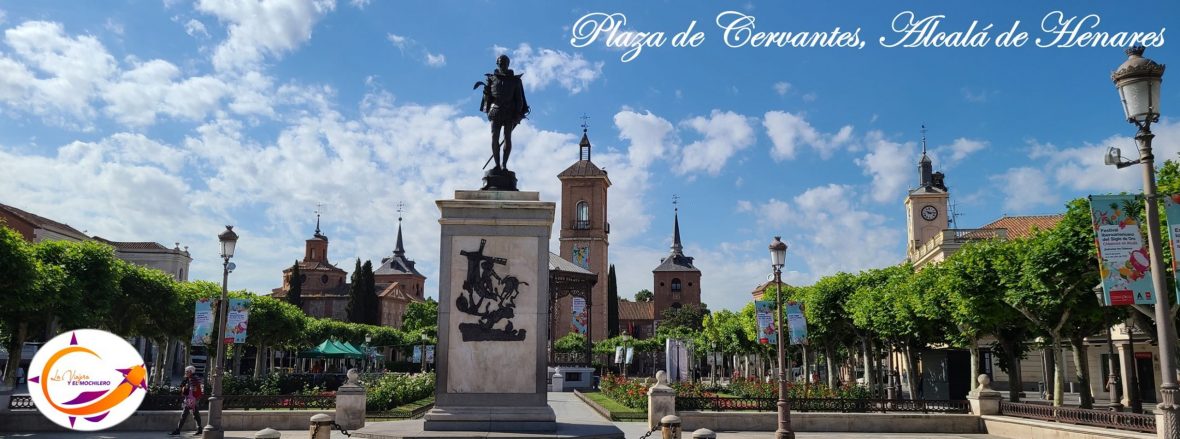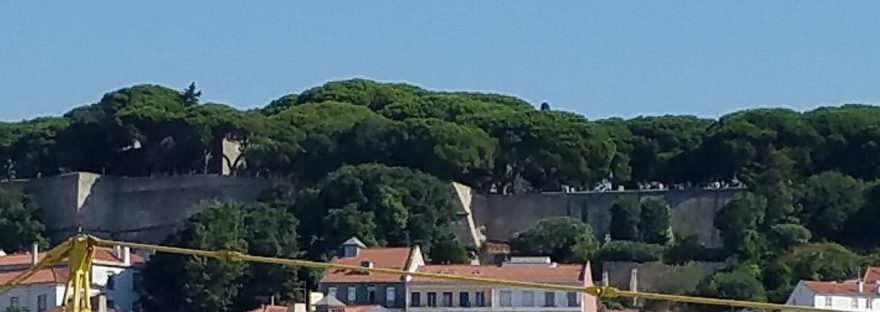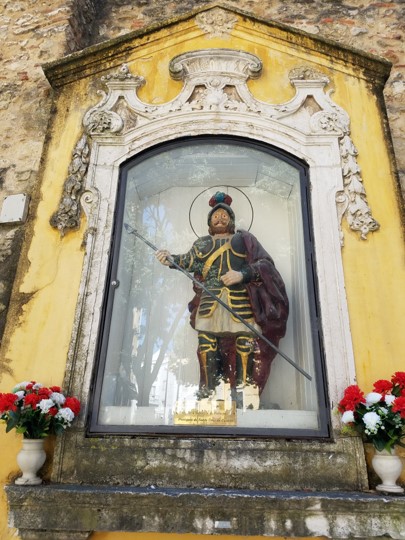 At the top of the highest hill in the “Alfama” ward, you will find what from the 12th century is known as the “Castelo de São Jorge” or “Castillo de San Jorge”. The castle has eleven towers and its construction of the mid-eleventh century is attributed to the Muslims, with the purpose of defending the “Alcazaba” or citadel.
At the top of the highest hill in the “Alfama” ward, you will find what from the 12th century is known as the “Castelo de São Jorge” or “Castillo de San Jorge”. The castle has eleven towers and its construction of the mid-eleventh century is attributed to the Muslims, with the purpose of defending the “Alcazaba” or citadel.
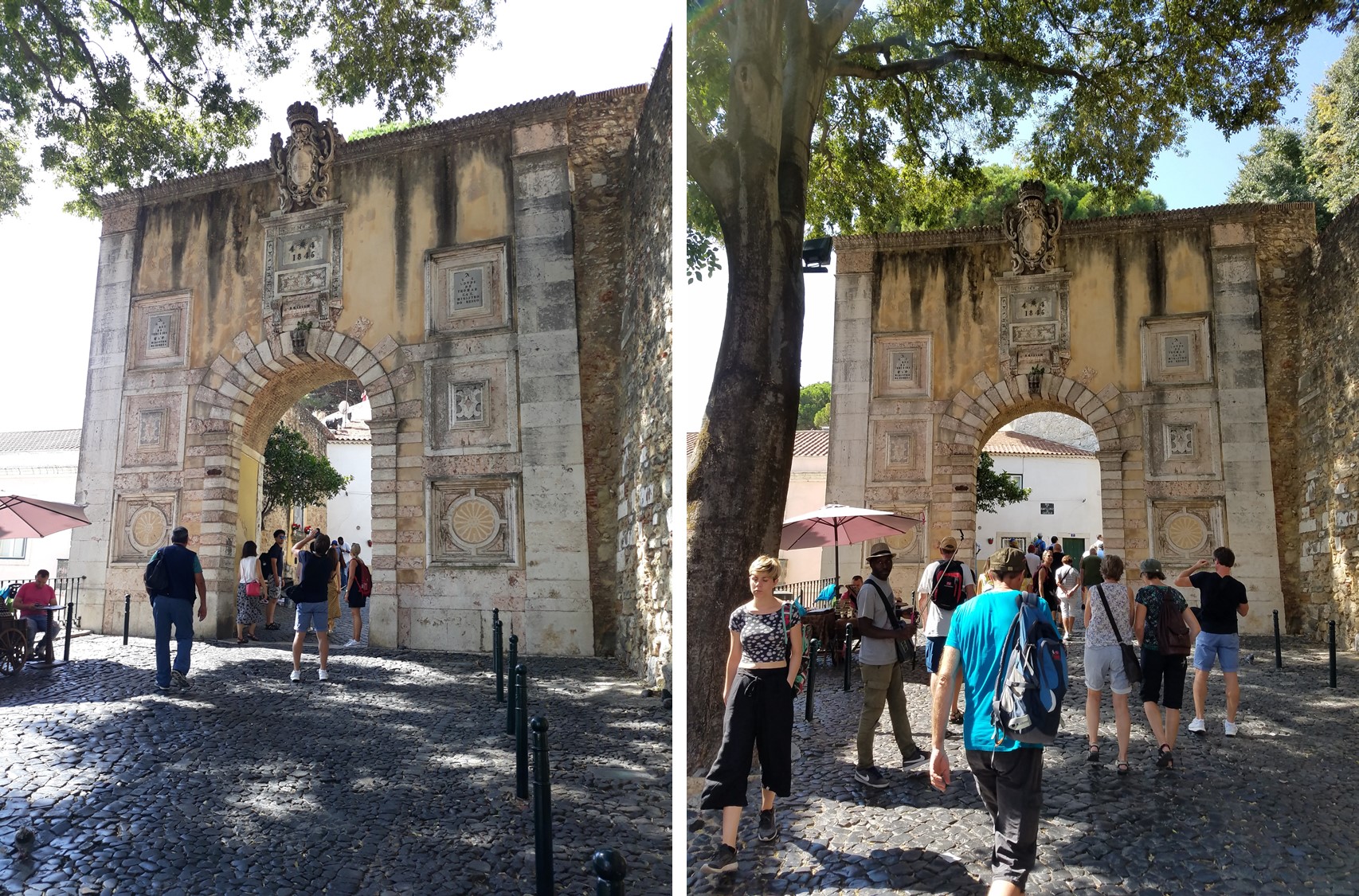
The Castle has many similarities with other defensive structures of Moorish origin that are found throughout the Iberian Peninsula. However, archaeological findings of the twentieth century seem to confirm the existence of other fortifications in this place dating to the occupations of the Phoenicians, Greeks and Carthaginians and eventually by the Romans. In addition, there are versions that argue that the Visigoths were the first to build a military fortification on this summit in the 5th Century.
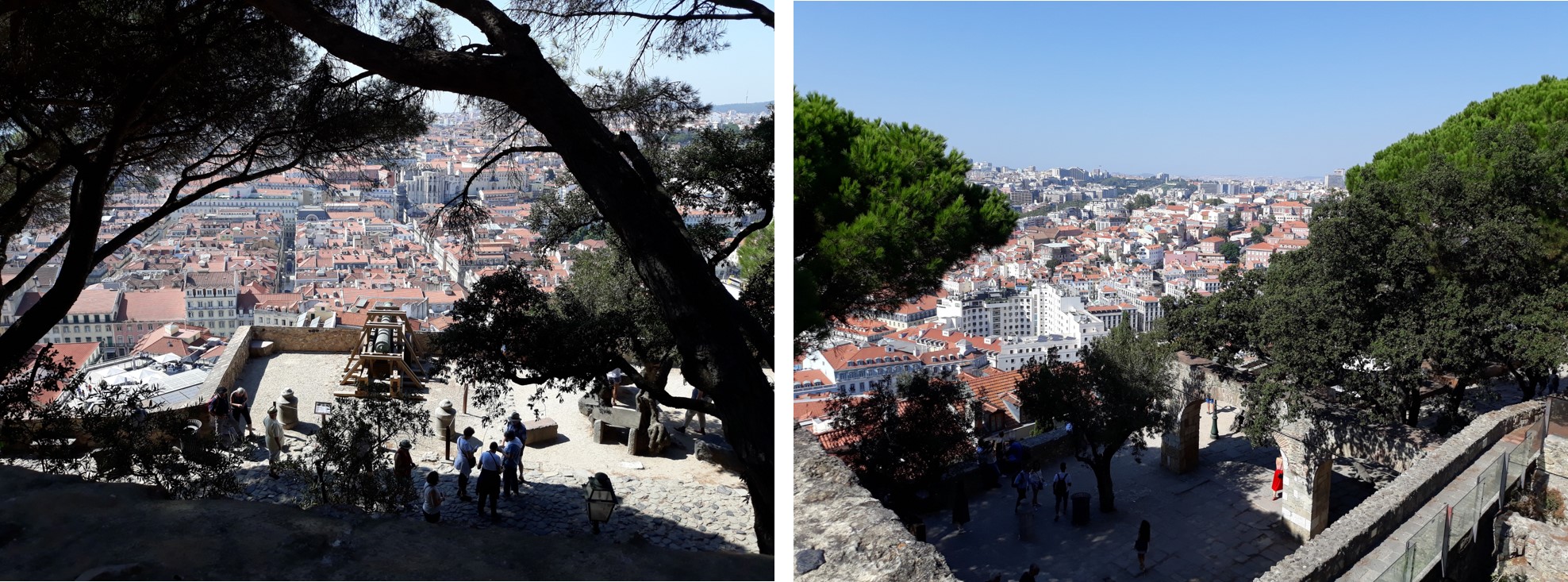

The Castle of San Jorge housed a series of buildings as part of the “Alcazaba”. Among them was what was the old royal palace of the first King of Portugal, Afonso Henriques or Afonso I. Afonso Henriques was responsible for major modifications to the Castle. The Castle has been subject to continuous reconstruction works over the centuries. Mainly, its reconstruction after the Lisbon earthquake in 1755 and again in 1938, at which time the structure is fully restored.
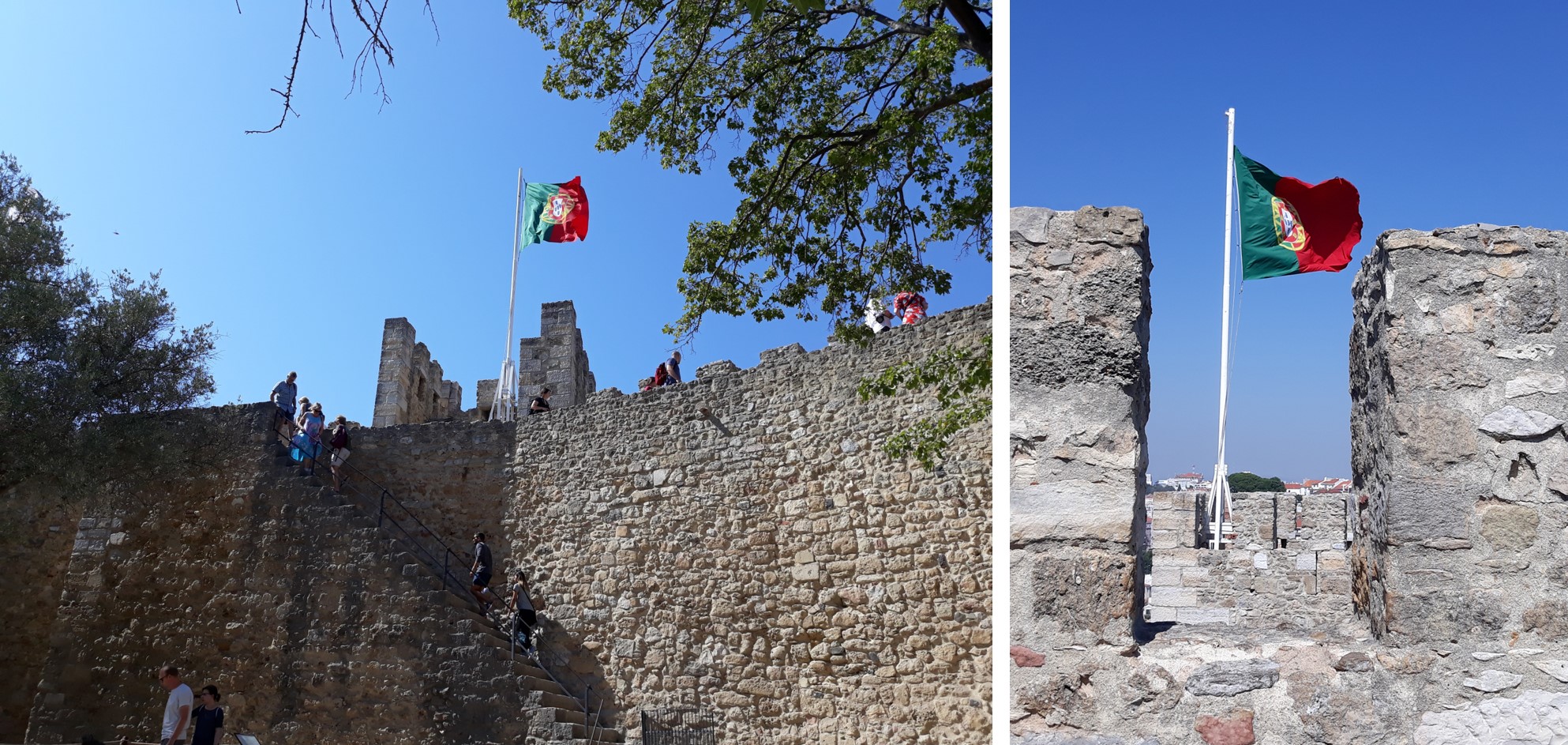
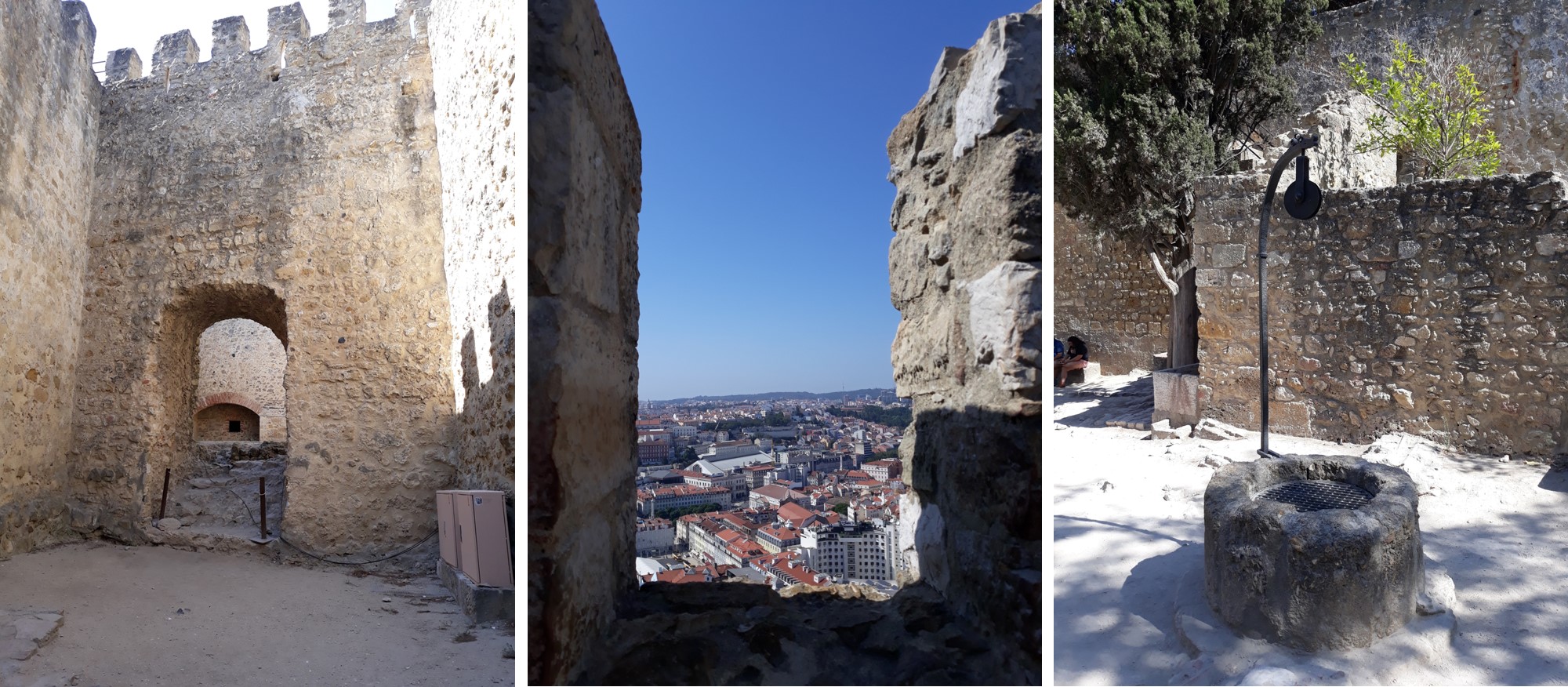
The Castle of “San Jorge” extends for approximately 6,000 square meters and in addition to its towers, it has extensive courtyards, the ruins of the royal palace and a cistern. They have a museum, places to eat, a community of peacocks and breathtaking views of the city and the Tagus River.
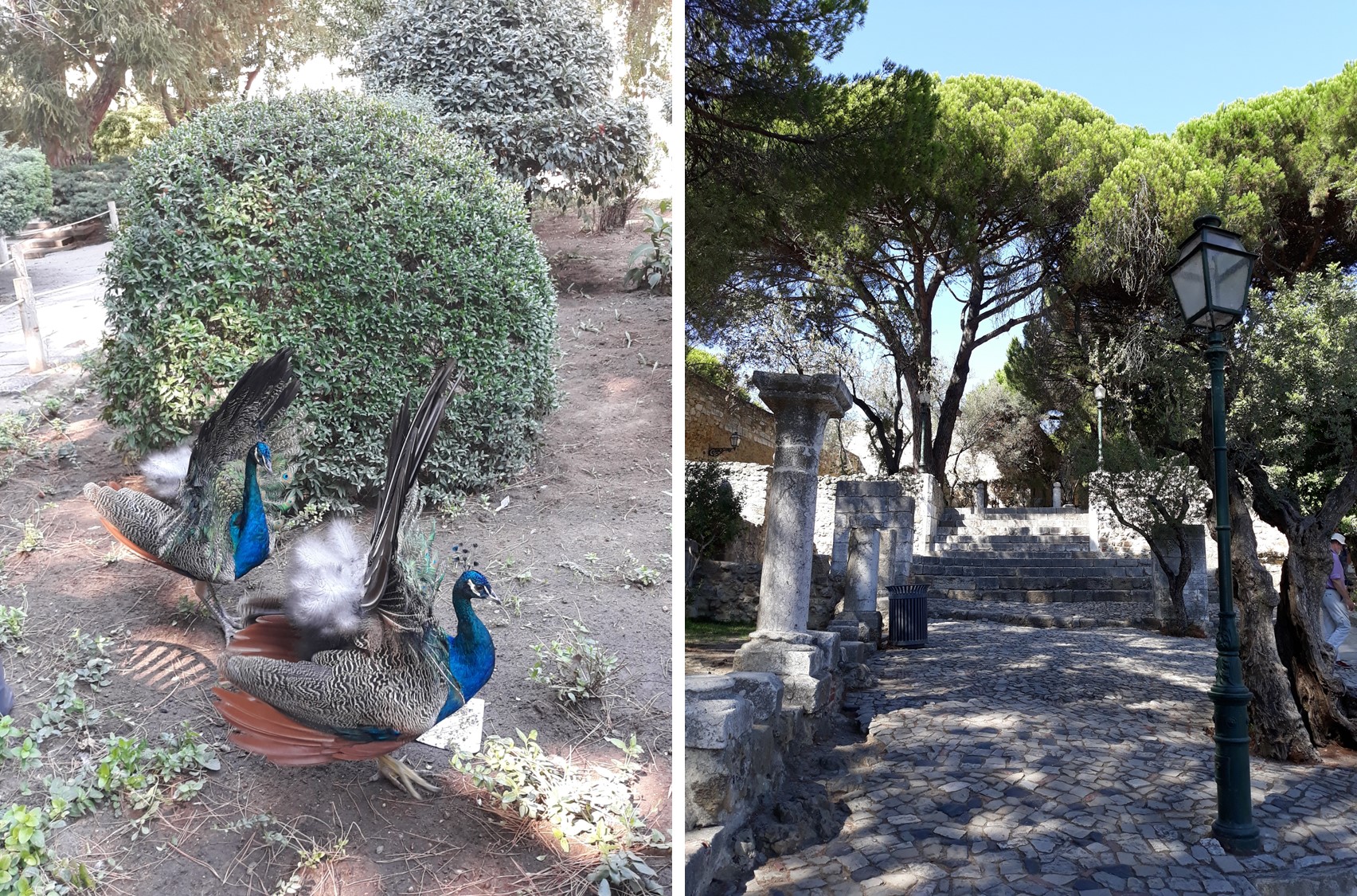
Climbing to the top can be a great challenge. We found that the less steep route starts from the “Mirador de Santa Luiza”, then continues along the “Chao da Feira” until reaching the “Arco del Castillo”, the main entrance to the enclosure and the “Bairro do Castelo”. We recommend visiting the site early in the day or in the evening.

